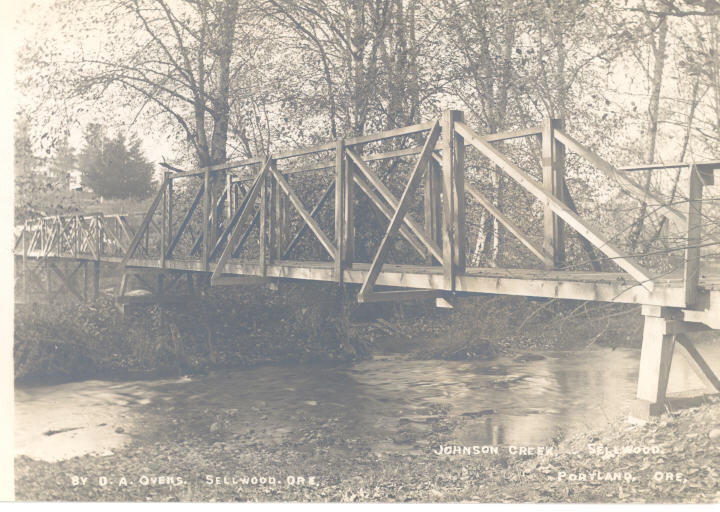Lilla Irvin Leach was an independent field botanist who, with her husband John, systematically collected plants throughout Oregon and other western states. She was particularly interested in the Siskiyou Mountains of Curry County in southwestern Oregon. She and John spent nine summers there between 1928 and 1938, exploring the heart of that rugged range where Lilla discovered several new species. In 1963, Leach donated her large private collection of more than 3,000 pressed plants to the University of Oregon; the specimens are now in the collections of the Oregon State University Herbarium in Corvallis.
Lilla Irvin, whose family had immigrated to Oregon over the Oregon Trail, was born on March 13, 1886, on her parents' farm in Barlow, Clackamas County. She is said to have developed her love of flowers while wandering the family acreage as a young child. She attended school in Barlow and Canby and then the Tualatin Academy in Forest Grove. There she met John Leach, from the bunchgrass country of eastern Oregon, who began (unsuccessfully at first) to woo her.
Lilla moved on to the University of Oregon, where she studied with botanist Albert Sweetser. She then taught high school botany in Eugene for five years. John Leach finally won her hand by assuring her he knew how to handle pack animals and "could take her where the cake-eating botanists could never get." They were married in an outdoor ceremony on her parents' farm in 1913 and moved to Portland, where John established a pharmacy. Their home in southeast Portland, now known as the Leach Botanical Garden, is open to the public.
Lilla and John, with their burros Pansy and Violet, reportedly traveled more than 1,000 miles of primitive trails on their Siskiyou expeditions. It was there, on June 14, 1930, that Lilla made her most important discovery, a pink-flowered shrub in the Heath Family, never before noted by botanists. Lilla later wrote that when she spotted the plant beside the trail, she "dropped to my knees ... I had never seen anything so beautiful before." She believed at once that she had discovered a new species.
Two years after its first collection, the plant was officially named Kalmiopsis leachiana, commemorating Lilla and John. The genus Kalmiopsis is endemic to southwestern Oregon and occurs nowhere else in the world; Oregon's Kalmiopsis Wilderness is named for the plant. The type specimen (the collection first examined by Louis Henderson) is housed at the OSU Herbarium.
Lilla and John bought property on Johnson Creek in southeast Portland and there built a home they called Sleepy Hollow. Their collecting slowed during World War II when Lilla began to suffer from arthritis. John died in 1972, and the home and garden became the property of the City of Portland ten years later. Lilla Leach died September 10, 1980, in Portland at the age of 94. Her ashes and John's were scattered in the Kalmiopsis Wilderness.
-
Leach, Lilla, 1.
Lilla Leach at Horsesign Butte, May 1931. Courtesy The Leach Collection, Univ. of Oreg. Knight Lib., Archives and Spec. Coll.
-
Leach, Lilla, 2.
Lilla Leach. Courtesy Leach Botanical Garden, Portland.
-
Kalmiopsis leachiana.
Kalmiopsis leachiana. Courtesy Leach Botanical Garden
-
![Leach Botanical Garden trail map.]()
Leach Botanical Garden trail map.
Leach Botanical Garden trail map. Courtesy Leach Botanical Garden
Related Entries
-
![Johnson Creek]()
Johnson Creek
Johnson Creek is a small stream in the Portland metropolitan area which…
-
![Kalmiopsis Wilderness]()
Kalmiopsis Wilderness
The 179,850-acre Kalmiopsis Wilderness, located in southwestern Oregon …
-
![Siskiyou National Forest]()
Siskiyou National Forest
The Siskiyou Forest Reserve was created on March 2, 1907; within two da…
Map This on the Oregon History WayFinder
The Oregon History Wayfinder is an interactive map that identifies significant places, people, and events in Oregon history.
Further Reading
Henderson, L.F. "New Plants from Oregon." Rhodora 33 (1931): 203-206.
Kirkpatrick, Golda, C. Holzwarth, and L. Mullens. The Botanist and her Muleskinner. Portland: Leach Garden Friends, 1994.
Love, Rhoda M. "The Discovery and Naming of Kalmiopsis leachiana and the Establishment of the Kalmiopsis Wilderness." Kalmiopsis, Journal of the Native Plant Society of Oregon 1 (1991): 3-8.







